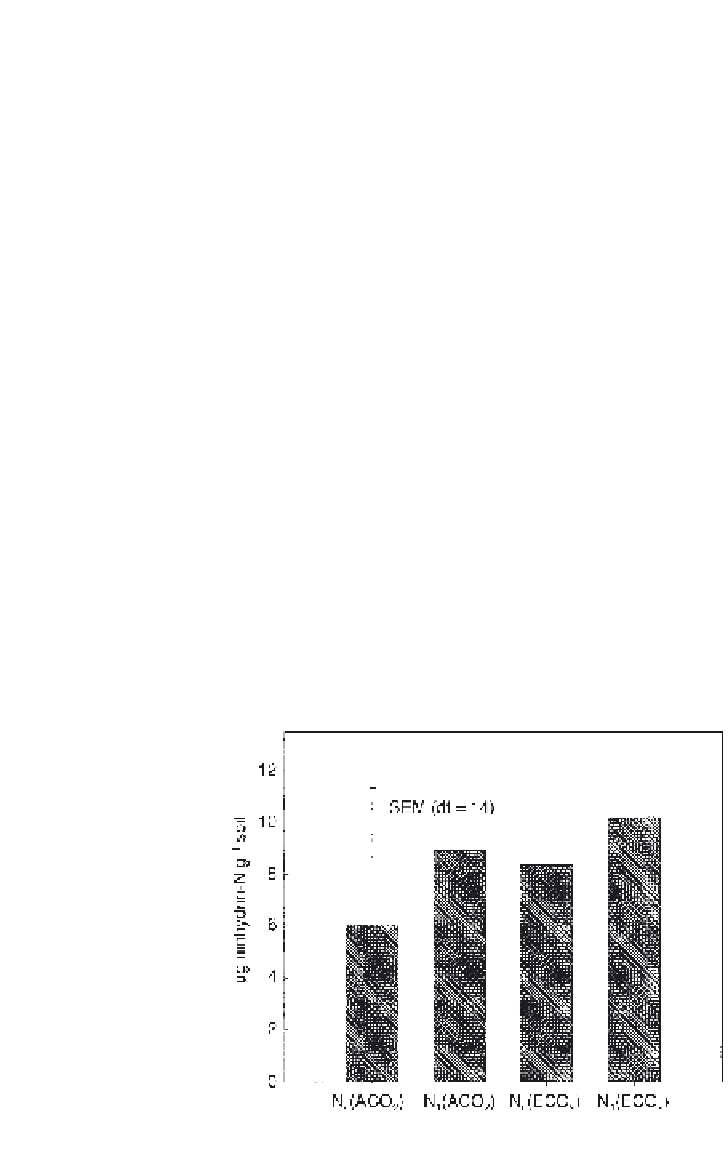Agriculture Reference
In-Depth Information
rhizosphere denitrifier populations may be mediated simply through the
greater C flux due to bigger plants, in combination with some other indirect
effect (i.e. altered N dynamics).
Doubling the atmospheric CO
2
concentration increased the total N
uptake (Table 4.12.1) for the whole plant by 90% in the low N treatment
and by 81% in the high N treatment. Therefore, despite an increased flux of
C substrate into the rhizosphere under elevated CO
2
, microbial populations
may have been limited by the availability of N.
The ninhydrin N microbial biomass (Fig. 4.12.2) in the rhizosphere
was significantly (
P
< 0.05) increased due to the greater C supplied by
roots under elevated CO
2
, but was not statistically affected by variations
in N availability. Differences in microbial biomass between the enriched
and ambient atmosphere were 38 and 14% at low and high N input,
respectively.
The overall interaction between N levels and CO
2
concentration
was not significant for rhizosphere denitrification activity (Fig. 4.12.3),
although the individual effect of different levels of N fertilization was signifi-
cant (
P
= 0.01). The denitrification rates observed in our study were within
the range (0.05-0.39
gNg
−1
h
−1
) observed by Højberg
et al
. (1996) in
young barley rhizosphere soil. These authors also reported much higher
potential nitrate reduction activity (tenfold) in the rhizosphere than the
potential denitrification rate. Enzyme synthesis for nitrate reduction may
take place at slightly higher oxygen concentrations than that for other
denitrification enzymes. In our experiment, the greater plant growth under
elevated CO
2
may have induced a higher water uptake, leading to a relative
increase in the O
2
availability and a decrease in the diffusion of N substrate
µ
Fig. 4.12.2.
Ninhydrin N microbial biomass in the rhizosphere soil.











Search WWH ::

Custom Search